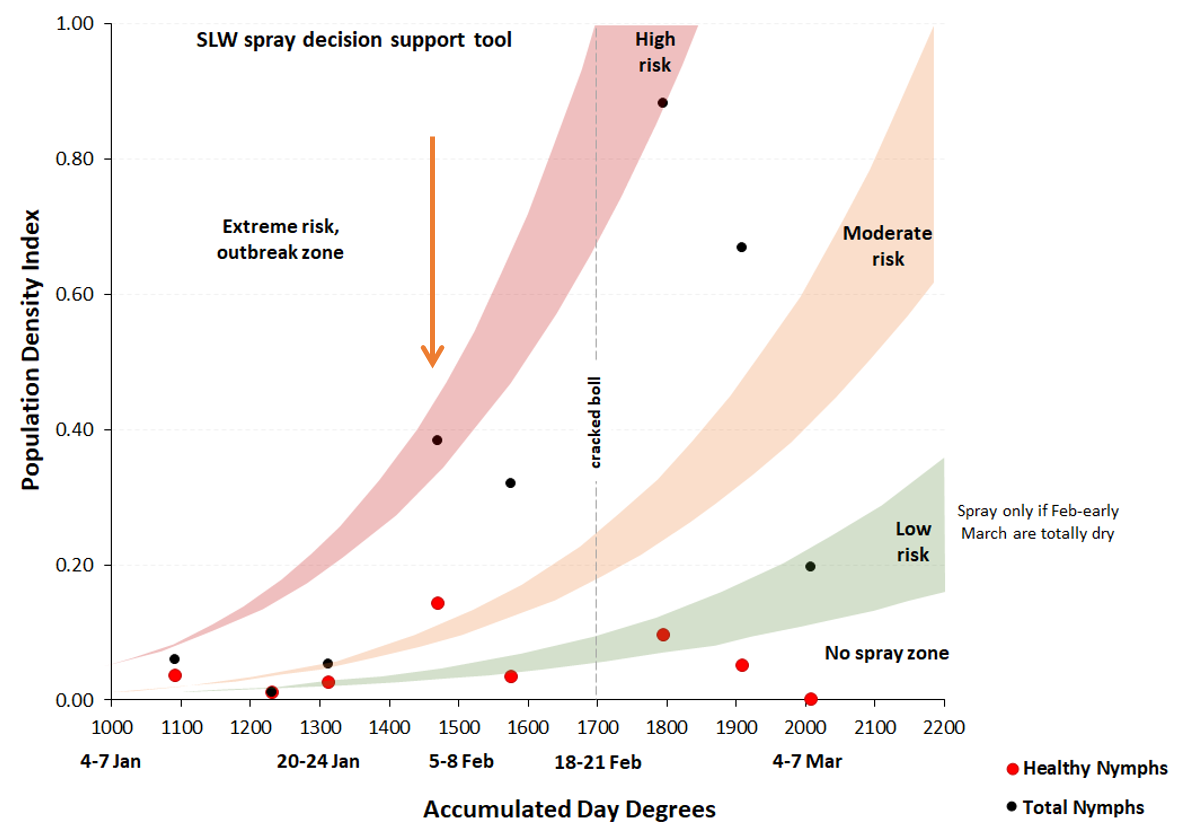The first major outbreak of silverleaf whitefly (SLW) in Australia occurred in 2001-02 in central Queensland. Although it hasn’t occurred again in such biblical proportions, SLW has spread across Australia and is still a pest to watch in many cotton crops, as the honeydew it secretes contaminates the lint.
The original SLW threshold matrix developed in central Queensland recommended looking for SLW adults on leaves about 4-5 nodes below the terminal. Reports from the cotton industry over the last few years indicating significant inter-regional variability in population dynamics, along with other considerations such as the relatively high mobility of adults, has led to a review of the matrix. A CRDC project by DAF and CSIRO has re-examined sampling methods and validated population dynamics across regions and is developing a new decision support tool (DST) that focusses on monitoring nymphs in the lower canopy.
Eventually the DST will be integrated into a SLW sampling app (under development in another CRDC project by DAF and USQ). An interim DST is available to crop managers for road testing this season (2019-20) as an excel workbook; it includes a data entry and visualisation worksheets.
Relatively straightforward to use, the new tool requires the crop accumulated Day Degrees (DD) at the time of sampling and a count of the proportion of healthy (red eyed) nymphs on each leaf at the 11th nodal position. The ability to also identify predation, parasitism or other mortality is not necessary for making spray decisions, but would assist crop managers determine the impact of various natural enemies and contribute to making more effective whitefly management decisions.
The interim DST’s excel chart gives the user a real-time visualisation of the whitefly population density in relation to the risk of lint contamination, and the need (or not) for spraying. An example is given below. At around 1475 Day Degrees (orange arrow), total nymphs (black dot) indicated a high risk of severe lint contamination but the corresponding healthy nymphs (red dot) signifies around 60% mortality. The progression of red dots over the season indicated very high natural mortality of whitefly which largely neutralised the lint contamination threat after cracked boll thereby helping to avoid intervention with chemical insecticides.

The use of the interim whitefly DST to visualise actual data from a crop sampled in NSW in 2019.
For more info on the interim DST, contact Richard Sequeira ([email protected]; 0407 059 066)
SLW videos available from CottonInfo:
Adapted from an article by Richard Sequeira in the Autumn 2020 edition of Spotlight
